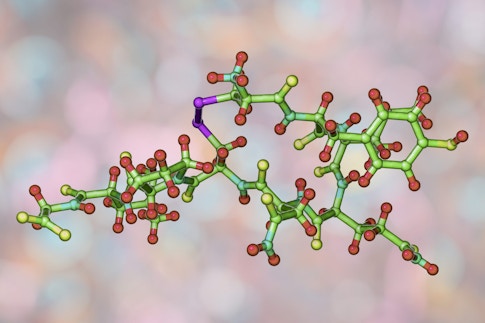
Dr_Microbe/iStock
Challenges in social interactions are a core feature of autism spectrum disorder (ASD). Many brain regions and neuromodulators regulate social behaviors, but the ways in which these individual regions interact and might be affected in the brains of individuals with ASD are not yet clear. Understanding the neurobiological underpinnings of social behavior in ASD is further complicated by the large variety of gene variants now associated with ASD (SFARI Gene). A recent study sheds light on the neural mechanisms underlying social behaviors by performing extensive brain-wide mapping of neuronal activity in a mouse model of a genetic form of ASD.
In this model, mice are missing Cntnap2, a gene that encodes a protein involved in interactions between neurons and glia. Mutations in this gene cause a neurodevelopmental syndrome in children (Strauss et al., N. Engl. J. Med., 2006) and ASD-related behaviors in mice, including changes in social behavior, repetitive behaviors and hyperactivity (Peñagarikano et al., Cell, 2011). These mice also have reduced brain levels of oxytocin (Peñagarikano et al., Sci. Transl. Med., 2015), a neuromodulator with a well-established role in different aspects of social cognition and behavior (Meyer-Lindenberg et al., Nat. Rev. Neurosci., 2011).
Neuroimaging studies in humans suggest that ASD-related behaviors may be related to changes in the connectivity patterns of neural circuits, as shown by functional magnetic resonance imaging (fMRI) of resting-state functional connectivity (rsFC) in children and adults with ASD (Di Martino et al., Mol. Psychiatry, 2014). Supported in part by a SFARI Pilot Award, SFARI Investigator Daniel Geschwind and his collaborators investigated whether Cntnap2 knockout mice exhibit changes in circuit connectivity and what role oxytocin might play within this circuitry. The researchers integrated multiple cutting-edge brain-mapping approaches in their study. First, using fMRI designed for small animals, they showed that mice missing Cntnap2 had altered patterns of rsFC. In particular, core brain regions involved in social behavior had a pattern of weak connectivity with each other and a pattern of atypical hyperconnectivity with the rest of the brain.
The changes in brain connectivity in Cntnap2 knockout mice were largely regulated by oxytocin. Several forebrain nuclei associated with social reward — the nucleus accumbens, the bed nucleus of the stria terminalis (BNST), the hippocampus and the medial septum — showed a robust change in rsFC with other brain regions after oxytocin was administered. A closer look at pairs of connections between these social regions — nucleus accumbens connections with the BNST, and medial septum connections with the hippocampus — similarly showed marked changes in rsFC in response to oxytocin in knockout mice. Oxytocin also stimulated activity across several brain regions linked with social function in knockout mice.
Interestingly, the effect of oxytocin on brain connectivity and activity were unique to the Cntnap2 knockout mice; the same effects were not seen in wildtype mice. This complements previous behavioral research showing that oxytocin restores social behavior in Cntnap2 knockout mice without affecting wildtype mice in the same way (Peñagarikano et al., Sci. Transl. Med., 2015).
These fMRI results were confirmed at a cellular level, using another powerful brain-mapping approach known as iDISCO+ brain activity mapping, which allowed the researchers to obtain a brain-wide activity map. This map revealed strong activation of social regions by oxytocin in Cntnap2 knockout mice, resulting in a normalization of activity patterns. In sum, the researchers were able to establish, using multiple complementary brain-mapping methods, that oxytocin influences brain activity and functional connectivity specifically in mice lacking the Cntnap2 gene.
The study went on to show that one forebrain region in particular — the nucleus accumbens — is a key brain region for the pro-social effects of oxytocin in Cntnap2 knockout mice. This was shown by a strong activation of the nucleus accumbens by endogenous oxytocin in knockout mice, as well as by behavioral experiments showing that selectively targeting oxytocin receptors in only the nucleus accumbens (either through pharmacological or optogenetic activation) was sufficient to increase social behavior in knockout mice. These findings point to the nucleus accumbens as a major hub where oxytocin acts to modulate social behavior in the Cntnap2 knockout mouse brain.
This study is the first to illustrate brain-wide functional connectivity changes related to social behavioral deficits and their regulation by oxytocin within the nucleus accumbens in a Cntnap2 mouse model for ASD. The findings take us one step further in understanding how mutations in an ASD-risk gene impact brain circuitry and how oxytocin influences the activity of these circuits, ultimately affecting social behavior.
Reference(s)
Oxytocin normalizes altered circuit connectivity for social rescue of the Cntnap2 knockout mouse.
Choe K.Y., Bethlehem R.A.I., Safrin M., Dong H., Salman E., Li Y., Grinevich V., Golshani P., DeNardo L.A., Peñagarikano O., Harris N.G., Geschwind D.


